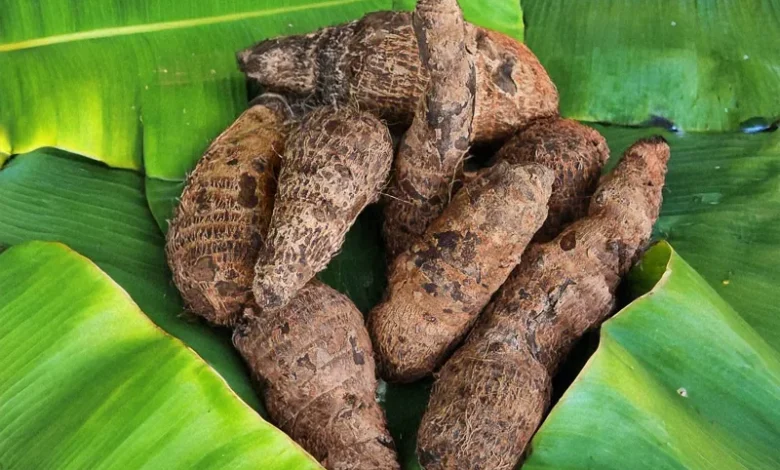Tannia

Tannia (Xanthosoma sagittifolium) is a vital root crop in Dominica, often hailed as a “hidden gem” for its versatility and significance. Thriving in the island’s tropical climate and fertile volcanic soils, tannia is a staple food and an economic asset. Its arrowhead-shaped leaves and starchy tubers are a source of nutrition and a symbol of the sustainability of agriculture in Dominica.
Nutritional Value and Culinary Uses of Tannia
Tannia is rich in dietary fibre, carbohydrates, and essential vitamins like B6 and C, making it a staple in Dominican diets. It is commonly boiled, mashed, or added to soups and stews, and its flour provides a gluten-free alternative for baking. This versatility has earned tannia a prominent place in local cuisine, with its ability to adapt to various dishes showcasing its culinary importance.
Economic and Agricultural Importance
As a key crop for food security, tannia is widely cultivated by smallholder farmers in Dominica. It supports rural livelihoods through domestic sales and exports, with significant demand in neighboring Caribbean islands. Its drought resistance and minimal input requirements make it a sustainable crop, ensuring reliable yields even in challenging conditions. Tannia’s role in both local consumption and international trade highlights its value as an agricultural cornerstone for Dominica.
Tannia remains a symbol of resilience and innovation in Dominica, embodying the island’s efforts to sustain food security and economic growth through its rich agricultural heritage.




